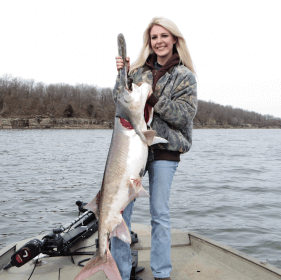- Home
- About
- Blog
- For Parents
-
Corners
- Allison’s Corner
- Amber’s Category
- Andrea’s Corner
- Ashley’s Corner
- Brandi Jo’s Corner
- Brittany’s Corner
- Brooke’s Corner
- Catrina’s Corner
- Conservation
- Desiree’s Corner
- Emily’s Corner
- Erica’s Corner
- Erin’s Corner
- Heather’s Corner
- Ivory’s Corner
- Jeana’s Corner
- Katie’s Corner
- Kelly’s Corner
- Kelsey’s Corner
- Kendra’s Corner
- Liberty’s Corner
- Lisa’s Corner
- Meagan’s Corner
- Melissa’s Corner
- Mimi’s Corner
- Morgan’s Corner
- Nicole’s Corner
- Sarah’s Corner
- Savannah’s Corner
- Shannon’s Blog
- Sharon’s Corner
- Sherri’s Corner
- Tara’s Corner
- Contact
- Guest Post

Spoonbill: Bad Meat or Bad Prepping
I recently went on my very first spoonbill snagging trip in Oklahoma. Before the trip I decided to research as much as I could on the process of cleaning, prepping and cooking the spoonbill meat. To my surprise many pages and articles expressed their disgust of the meat. One person even said that the best way to cook spoonbill was to season it, grill it on a cedar board, throw the meat away, and eat the board. I was pretty nervous and was worried about whether this trip would be worth it. After all, this trip was going to cost money and I wanted to make sure that I came home with some food for my family. Despite all of the warnings, I still went on the trip. Two days of fishing for fish that fought as ferociously as a log had me tired and worn out, but these magnificent fish had some pretty amazing size to them which said to me “Lots of food.” The guide we went with cleaned the fish and gave us the slabs of sides and left us with these words “Soak the meat, cut out the red, and grill it.”
Not much help huh? We left with 50 pounds of meat. That’s a lot of meat to be afraid to eat so we wanted to make sure we prepped this it right. Here is what we did.
We put all of the meat in a big cooler and soaked it in ice cold salt water. No, not a teaspoon of salt, A LOT of salt. We put enough water in the cooler to cover the fish, ice to keep it cool, and we used about ½ a cup of salt. Each day we replaced the water and salt mixture twice. We did this because spoonbill meat is extremely oily and the salt water mixture helps draw out blood and any other fluids that may leave the meat tasting…raunchy. (You can soak any fish meat in salt water, we do it with our catfish, walleye etc.) You have to change the water frequently because if you don’t, you’re just letting the fish soak in the oils.
After a 2 days the meat began to get firm and you could see the blood and fluids being drawn out. What was once a pinkish beige meat began to turn white! On day three we did one more soak, trimmed the meat of any excess fat and skin that may have been left on, and trimmed the red meat. Spoonbill has a thin layer of red fatty meat and we trimmed most of that out too. This step is very important because it’s that red meat that gives spoonbill a bad name. Day 4 we vacuum sealed the giant slabs of fish and we left out some small slices for a taste test. Might as well find out now if the meat is tasty, if not we were going to try and find someone to trade some spoonbill for deer meat. I ended up frying some chunks in a Cajun beer batter and let me say this….NEVER TRUST THE INTERNET (except for right now.
) This was an extremely firm and tasty meat. It reminded me of chicken. Who ever said that you should eat the cedar block you cooked the fish on may have been nuts because spoonbill may just be one of my new favorite fish to eat.
I learned that what separates good meat from the bad is how you prep it. I can see if we didn’t do all the salt water soaking how the meat may have not tasted as delicious, but guys and gals, soak your meat, trim the red, and I promise you won’t be disappointed.

We also recently got a 105 pd spoonbill.
Called me Aunt in South Louisiana and tried it her way. It was great..
The prepping is the same. Soak in the salt ice water.
But to eat, we cut it into 1″ squares, rolled it in mustard and then cornbread with some tony C’s….Yum…
This works great to get the catfish taste out of catfish too…